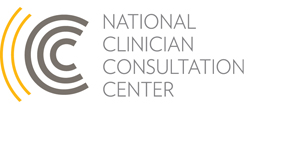Case of the Month: Exposure Management: Labor and Delivery and Breastfeeding
Case Summary
The Clinician Consultation Center received a call from a nurse on labor and delivery (L&D) who was preparing to admit a woman who was actively in labor at 41 weeks gestation. From review of the chart, the patient (who is also a healthcare provider) sustained a needle-stick five to six weeks ago from a source person known to have advanced HIV with immunosuppression. She was prescribed post-exposure prophylaxis (PEP) at the time of the exposure; however, she was not able to tolerate the medications because of side effects and only received a few doses. There are no details about the needle-stick itself. Fourth generation HIV test results and HIV viral from four days ago were negative. The patient does not have any other risk factors for HIV and has not had any exposures since the needle-stick. Rapid HIV-testing is able to be performed from Labor and Delivery (L&D), with an approximate one-hour turnaround time for results.
CCC Consultant Response
The consultant advised the nurse to screen the patient upon admission for signs or symptoms of acute HIV (fever, malaise, lymphadenopathy, etc). If the exam and review of systems are negative, there is no indication to start intrapartum IV AZT, as the mother would be considered HIV-negative based on results of the recent 4th generation and viral load tests, which can detect HIV as early as eight days after transmission. The consultant recommended sending a repeat HIV test as well as an HIV viral load from L&D as supplemental testing – if these results came back negative, the scenario would be even more reassuring.
Clinical decisions and anticipatory guidance regarding breastfeeding are more complex: even though there may be no evidence of seroconversion at delivery for this patient, post-exposure monitoring with surveillance HIV testing is still recommended out to 16-24 weeks after the needle-stick (depending on whether 3rd or 4th generation HIV tests are used). The patient in this case would still be in that follow-up period post-partum. The low likelihood of late seroconversion following the exposure would have to be weighed against the relatively high risk of HIV transmission through breastmilk if the mother were to breastfeed while acutely infected. If the mother prefers not to breastfeed, one option could be to pump and store her breastmilk until future HIV test results came back negative.
Consultant’s Note: Breastfeeding Considerations
In general, in situations where an exposed person is being evaluated for PEP and already breastfeeding, multiple issues should be considered including risk of HIV transmission, efficacy of HIV PEP medications, intended duration of breastfeeding, etc. For mothers of neonates/young infants, breastfeeding discontinuation may have a negative impact on the overall experience and well-being of mother and infant/child. However, if the risk of HIV transmission is high, then the mother may need to stop breastfeeding until HIV is ruled out.
Breastfeeding itself is not a contraindication to starting/continuing PEP, and there is currently no information that PEP medications are harmful for lactating women and infants/children exposed to the medications via breastmilk. It has been demonstrated that two of the medications currently recommended as PEP (tenofovir, emtritabine) do not reach high concentrations in breastmilk. It is unknown at this time whether raltegravir is secreted in human breast milk.
Because CCC consultations are based on information provided by the caller or clinician accessing the online consultation center, without the benefit of a direct evaluation or examination of the patient, consultations are intended to be used as a guide. They do not constitute medical advice and are not to serve as a substitute for medical judgment. This Case of the Month includes consultation based on the most up-to-date evidence at the time of its publication. To learn about current recommendations, please call one of our clinical consultation lines.
 University of California, San Francisco |
University of California, San Francisco |
